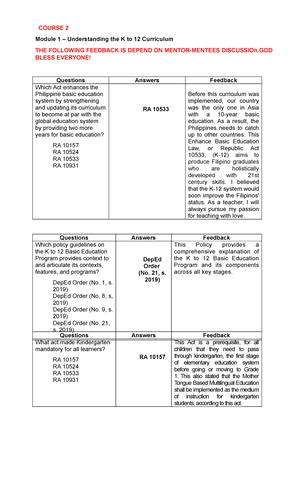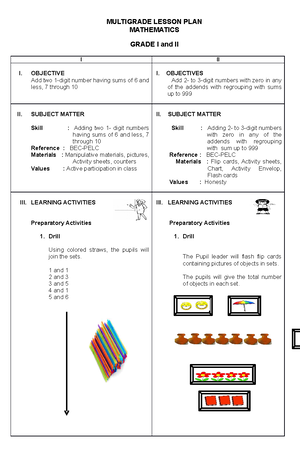- Information
- AI Chat
Was this document helpful?
Professional Reading for Education students
Course: Education (BSED3)
656 Documents
Students shared 656 documents in this course
University: Christ the King College
Was this document helpful?

Professional ReadingProfessional Reading
Title: Artificial Intelligence (AI) in Education
Author: Celia D. Andas, LPT, EdD
As the world gets older, the more it is becoming advance and this
advancement have great impacted our lives consciously and unconsciously.
Facebook, Instagram, Google, Shoppee and Google Translate are examples of how
AI has greatly entered our daily lives. In fact, one of the hearts of this
advancement is the education, this AI is on its way of changing the
current/traditional face of education. Therefore, it is a challenge for many
institutions and individuals who are still inclined to the traditional face of
education to be adapted to the revolution of time and responsive to the current
needs of education.
The CHED, DepeD, educational planners and educators are called to shift
the paradigm of education so that it can cope up with the emerging times. First,
re-designing the curriculum, the heart of the educative process, customizing it to
the development of needed skills and competencies of the 21st Century. Second,
Re-engineering strategies and approaches, and choosing appropriate content, as
vehicle in the attainment of the lesson’s goals, considering what the
programming experts have created. Third, re-tooling the faculty and school
administrators, orienting them about these programs, for effective usage and
delivery, supervision and implementation. Lastly, facilitating the faculty’s
readiness and willingness to embrace, the change of their crucial role as
facilitator and trainer.
Mapping out the areas in education that needs to be improved and revised
is highly important to fit in to our current world. It is our utmost goal in
education to make students to be relevant members of our society, productive
employees in the future who can execute task with precision, accuracy and
efficiency and become globally competent individuals. This will only realize if our
education can always ride on to the changing pacing of the world and only if our
education can provide technologically-ready institutions.
Reference:
Andas, C. (2019, July-December). The Professional Teacher. Lorimar
Publishing Inc. 12-13.
Title: The Top 5 Priorities of Classroom Management
Author: Ben Johnson
I could say, one of the most challenging part for teachers is the
classroom management considering that we will be handling completely
different students. Students that came from different walks of life, different
culture, beliefs and experiences. From the article that I’ve read, I’ve learned
the five essential ways on how to maintain/implement classroom
management. These are the following:
Develop effective working relationships with your students- good
relationship with students is important for classroom management
and if we have this with our students, we can push them harder and
further to learn because they have trust on us.
Train your students on how learning takes place in your classroom-
our students need to know their responsibilities as students, that they
should take accountable of their own responsibilities and own
learning. That is to train to become independent individuals and
learners.
Protect and leverage your time- as teacher one of classroom
management is to make use and maximize the time by being always
prepared everyday before coming to classrooms so we know
immediately the things that we need to accomplish for the day.
Anticipate your student’s behaviours in well-written lesson plans-
lesson plans should suit to students behavior and learning styles for
smooth transition of classes. The best discipline management plan is a
good lesson plan.
Establish behavioral standards- list behaviors that are acceptable in
the classroom and diminish improper behaviors by imposing
corresponding consequences.
Though there is no theory or principles on classroom management that
would do a magic overnight; however, results could be evident at the end if
there is strict implementation and consistency.
Reference:
Johnson, B. (2016, September 2). The Top 5 Priorities of Classroom
Management.https://www.edutopia.org/blog/5-priorities-
classroom-management-ben-johnson





